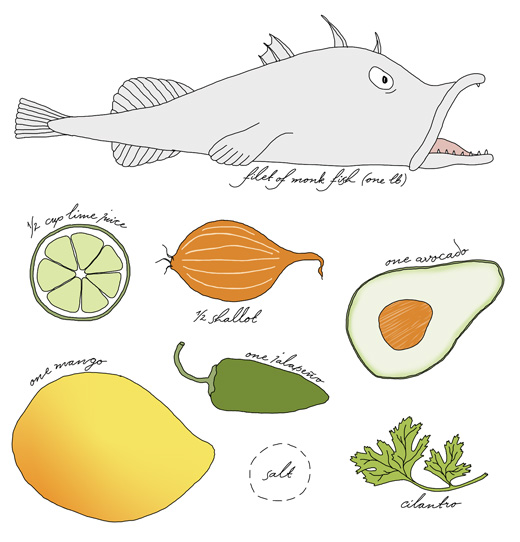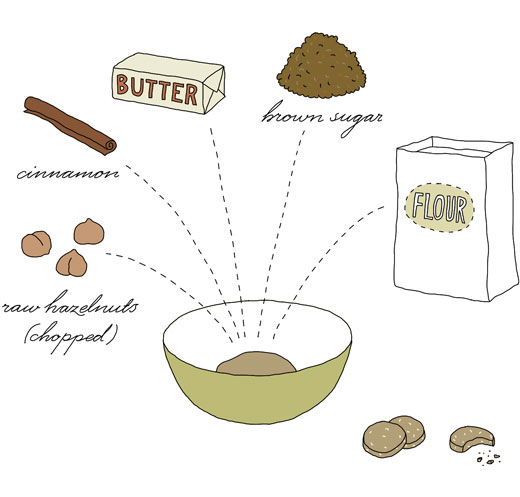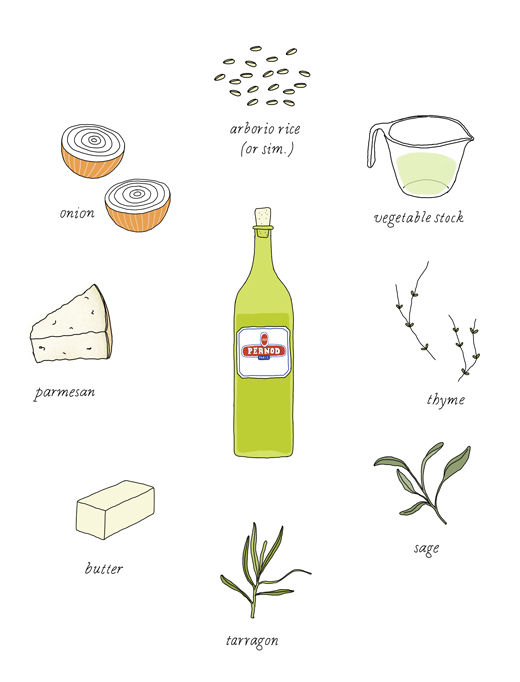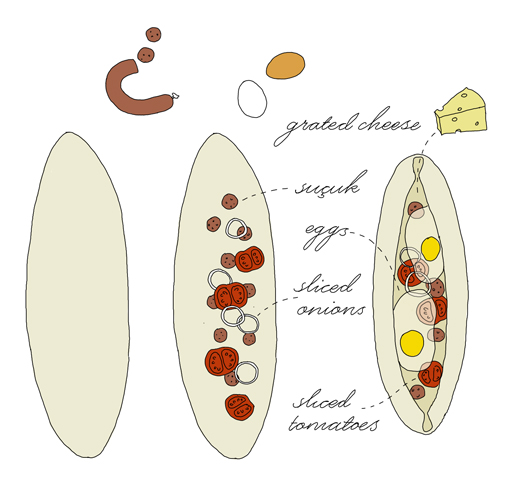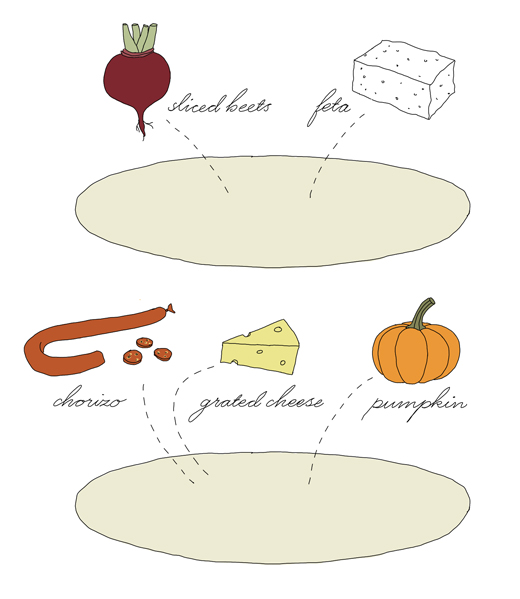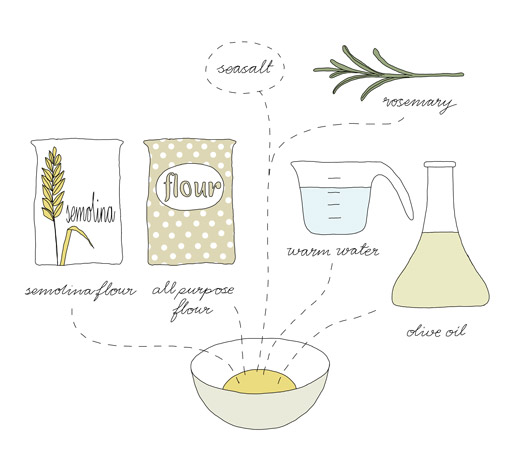
Another cookbook that’s become one of my favorites is Di Bruno Bros. House of Cheese: A Guide to Wedges, Recipes, and Pairings by Tenaya Darlington, aka Madame Fromage (Running Press, 2013). I have mentioned the book here several times but I think the book is worth it’s own post. First of all the book is not just a cookbook it’s an introductions to 170 different cheeses. The book is a collaboration with Di Bruno Bros., a well known cheese shop in Philadelphia.
In the book Tenaya simply tells stories around the selected cheeses, includes several ideas and tips on how to serve, what to drink and pair them with. Tenaya also teaches you how to buy a cheese and how to talk to a cheesemonger. The main purpose of the book is to help the reader find the cheese of their dreams. Unfortunately I want them all!
The book has several recipes for treats that works well with cheese, such as Lavender Mustard, Balsamic Poached Figs and Semolina Crackers (see below). There are also many cheesy recipes, for e.g. Manchego & Marcona Almond Pesto and mouth watering Grilled Peaches with Quadrello di Bufala
I’m so looking forward to her next book, which is a cocktail collaboration with her brother André Darlington. When ever I read something by Tenaya, the book or something on her website I end up hungry with a big smile on my face. Tenaya has loads of humor. Chapters as Baby Faces, Stinkers and Pierced Punks is just a few examples of her excellent wittiness!
I’m dreaming that one day Tenaya will have me over for dinner…
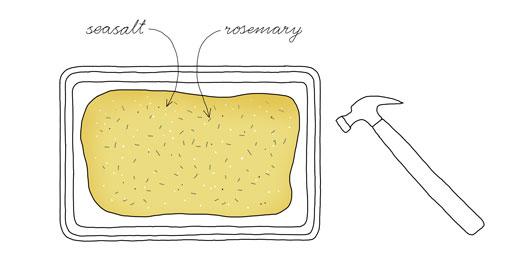
Madame Fromage’s Semolina Crackers
(I didn’t counted them but there were plenty to serve with a cheese plate for 4 people)
As you know, I like to bake, so after receiving the book last Spring I almost immediately baked Tenaya’s Semolina Crackers (that are adapted from Heidi Swanson‘s recipe). I like the way Tenaya bakes them, just simply rolled out on a baking sheet, baked, cooled and then “cracked” with your hands before serving. You can also roll them out with a pasta machine, like I suggest here below. I have halved the recipe and changed the method slightly, otherwise it’s pretty much the same as in the book.
dough
¾ cup (123 grams) semolina flour cup
¾ cups (106 grams) all purpose flour, plus extra for rolling out the dough
one teaspoon flaky sea salt (more if you like saltier crackers)
½ cup (about 120 ml) warm water
about 2½ tablespoon olive oil, plus extra for brushing
flavour
fresh rosemary
Mix together the water and the olive oil in a large bowl before adding the flours, sea salt and chopped rosemary. Work together well with a wooden spoon or spatula. Transfer the dough to a floured flat surface and knead for about 5 minutes. The dough should feel smooth and not sticky. Shape the dough into a ball. Place in an olive oil greased bowl. Let the dough rest in the fridge for one hour.
Cut out small pieces (size depends on how long crackers you want) and flatten them out slightly with your hands. Roll them out about 2″ wide with a rolling pin or pasta machine. Roll them out as thin as you can and desire. (I roll them out to level 5 in the pasta machine which is less than 1/8 inch thickness). Dust with more flour if the dough feels sticky.
Grease a baking sheet with olive oil. Place the long crackers on the sheet and bake at 350°F (175°C) for about 15 – 20 minutes until golden brown. Let the crackers cool completely (not stacked) on a flat surface. Store in airtight containers. My crackers never lasted that long, but according to Tenaya they store well up to a week.
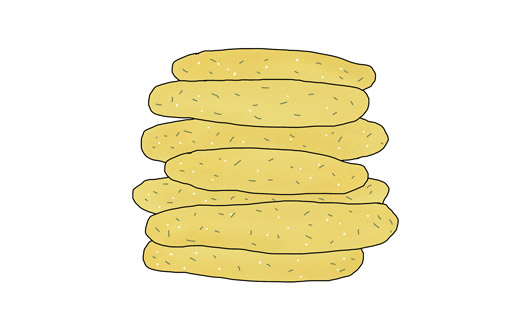
*
Tenaya will have some book signings (around Philadelphia) in December (2014).
More with Tenaya Darlington on Kokblog
Your Spring Goat Cheese Primer (part 1) collaboration between Tenaya & me
Late Summer Cheese Picnic (part 2) collaboration between Tenaya & me
Smoke and Funk: A Fall Cheese Board (part 3) collaboration between Tenaya & me
How to Turn Your Desk Into a Cheese Board – guest post by Tenaya

